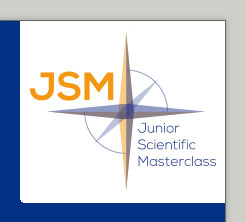Onderzoeksproject aanpassen
Projecten zijn uitsluitend aan te passen door bij het project behorende onderzoekers.
Geef via het uitrolmenu aan welke onderzoeker u bent. Nadat op u de button 'Edit project' heeft geklikt, wordt automatisch een e-mail verstuurd naar het e-mailadres van de onderzoeker die u heeft gespecificeerd.
In deze e-mail staat een link waarmee u het project kunt wijzigen.
Project properties
| Title | C/EBPβ-LIP induced cancer cell metabolism |
|---|---|
| Keywords | Cancer cell metabolism nutrient addiction |
| Researchers |
Prof. dr. C.F. Calkhoven T. Ackermann |
| Nature of the research | Cancer cell metabolism and possible link to cancer therapy |
| Fields of study | cell biology oncology molecular biology |
| Background / introduction |
|---|
|
Cancer cells adapt their metabolism to allow for cell growth (mass) and proliferation (number). Typically they maintain a high glycolytic flux (aerobic glycolysis) in order to provide the cell with molecular building blocks for cell growth 1. During glycolysis NAD+ is reduced to NADH in the redox reactions of glycolysis. To maintain a high glycolytic flux cancer cells need to restore NAD+. Therefore cancer cells convert pyruvate and NADH into lactate and NAD+ (the Warburg effect) 2. Recent publications show a second mechanism by which cancer cells restore NAD+ level. They oxidize the NADH in the mitochondrial electron transport chain. Thereby enable the cell to use pyruvate for synthesis of biomass 3. Furthermore, NAD+ is an important co-factor in signaling pathways in cancer cells. It is used as a substrate for the polyribosilation of proteins, a protein modification that is part of the cellular stress response. In addition, sirtuins that are key proteins in cellular metabolism and stress response depend on NAD+ as a cofactor 4. Our research shows that the oncogene C/EBP-LIP induces cancer cell metabolism with a change in NADH/NAD+ utilization and addiction to glucose metabolism. Understanding the relation between C/EBPβ-LIP and NAD+ metabolism may result in novel anti-cancer treatment options. |
| Research question / problem definition |
|---|
| Therefore, we will to investigate the mechanisms of NADH/NAD+ regulation by LIP in breast cancer cells. Furthermore, we will investigate the role of polyribosilation or sirtuins in LIP-mediated oncogenesis. |
| Workplan |
|---|
|
As part of the master project the student will learn how to: - culture and maintain cancer cells - perform proliferation assays and treat cell with inhibitors of specific pathways - make protein extracts and analyze them via western blot - perform metabolic flux analysis via Seahorse XF96 analyser |
| References |
|---|
|
1. Hanahan D, Weinberg RA., Cell. 2011 Mar 4;144(5):646-74. doi: 10.1016/j.cell.2011.02.013. 2. Vander Heiden et al, Science. 2009 May 22;324(5930):1029-33. doi: 10.1126/science.1160809. 3. Gui et al, Cell Metab. 2016 Nov 8;24(5):716-727. doi: 10.1016/j.cmet.2016.09.006. Epub 2016 Oct 13. 4. Canto et al, Cell Metab. 2015 Jul 7;22(1):31-53. doi: 10.1016/j.cmet.2015.05.023. Epub 2015 Jun 25. |


